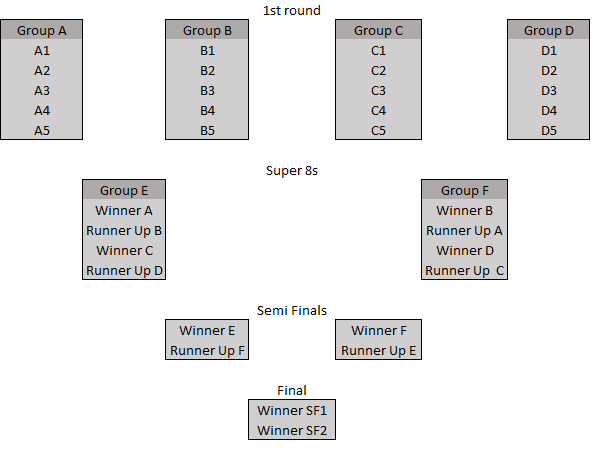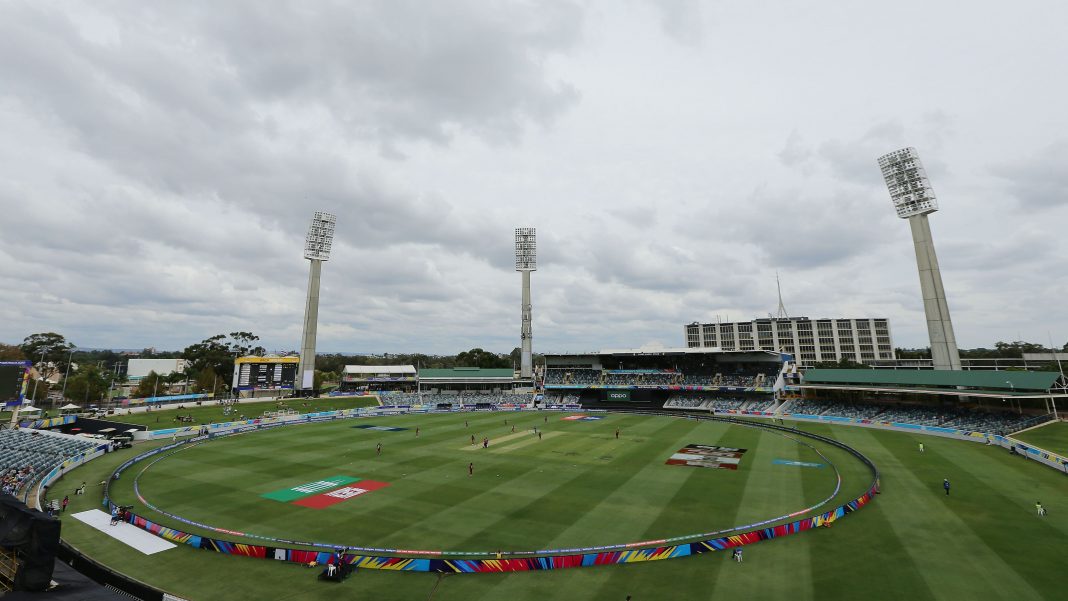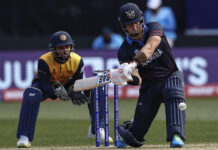The start of a new year is, for many, a time for reflection: a time to look back at events of the previous year and consider how you might do things differently or better in the coming year. At the turn of a new decade, like the one we have just begun, we may reflect on and look ahead to whole 10-year periods. If we can do it for ourselves, why can’t we do the same for cricket?
Of course, cricket doesn’t operate on 10-year cycles neatly bookended by calendar decades, instead, it operates in cycles of 4 years, with the current cycle having started at the end of the 2019 Cricket World Cup and running until the conclusion of the 2023 World Cup in India.
It makes very little sense to look forward to the current cycle because it’s already in motion. Instead, I will use this series of articles to consider how the ICC could upgrade its existing structures and tournaments for 2023 and beyond to make a unique and thrilling product but also one that enables the game to grow and expand at a steady and sustainable rate.
The ICC recently released the outline for its global tournaments for the period of 2023-2031, increasing the number such that there is either a 50 over or 20 over tournament for both men and women in each year of the cycle. It sees the introduction (or reintroduction) of the Champions Trophy for both ODI and T20I cricket under the name of the Champions Cup. It’s fitting, therefore, to use this piece to review the ICC’s use of short tournament formats and how they could be better used.
Cricket’s use of its world cups and global trophies has been a contentious issue in recent times. Since 2007 the number of teams at the flagship Cricket World Cup has decreased from 16 to 10 (though the number of matches remains almost the same, 51 & 48 respectively). In the ICC’s ‘global growth format’, T20, the number of teams participating beyond the preliminary round has until this year been 10, though it now increases to 12.
The shrinking of global events in cricket – at a time where other major sports are growing theirs – is the result of the political and financial influence that the three biggest markets in India, England and Australia have gained over the ICC. Their motive? Fill their boots financially by guaranteeing their national teams as many games as they possibly can.
In practical terms, this means global tournaments are increasingly moving towards single, large group stages and fewer knockouts. More teams in a group means more games for each team before there is a risk of being eliminated, but the side effect is it results in a huge game count. A single group of 10 teams has more than twice the number of matches than that of two groups of 5. Because there is a limit to the number of games you can have before fans get bored, the number of teams is decreased to keep the game count in check. Knockouts matches – by far the most exciting fixtures where everything is on the line – also get the chop as the ‘big three’ aim to minimise the chance of elimination.
So, when the ICC revealed its plans for its global tournaments last month, it was to the disappointment, but not to the surprise of fans that the trend of bloated group stages and curtailed team counts continued.
The men’s 50 over world cup is expected to maintain its 10-team single round-robin as run in 2019 and will be run in 2023, but new is the Men’s ODI Champions Cup, a 6-team event formed of the resuscitated Champions Trophy, with a single round robin and final. The qualification pathway is not yet announced but it’s more than likely that the 6 teams that will appear will be the same 6 that appear at the top of the World Cup. It leaves you asking: What is the difference?
On the T20 front, it is at least refreshing to see the T20 World Cup expand to 20 teams though we are unlikely to see the effect until 2026 based on the proposed schedule. The format remains unclear, though we understand it will contain 55 games. This leaves a couple of viable options, the most likely is that the tournament will start with 4 groups of 5, with the top two progressing a ‘Super 8’ stage and then semi-finals and final.
Filling the gap as the T20 World Cup returns to a once-every-4-year event is the T20 Champions Cup. Of all the possible proposals, this event is the worst of all worlds. Running the same 48-game format as the ODI World Cup, this tournament is a hinderance for the financially stable Full members as it removes time that could be used on bilateral cricket, and for the smallest Full members and Associates it is restrictive as only 10 teams will participate, making qualification nigh-on impossible.
On the women’s front, it’s more of the same. Despite the overwhelming success of the T20 World Cup in the last month – in which debutants and Associate member Thailand universally won hearts and minds, and in which nearly 90,000 people attended the final – there is no plan for expansion. In fact, the frequency of the T20 World Cup is to be halved to once every 4 years. Replacing it is 6-team T20 Champions Cup. Once again, you can expect the six participating nations to be top 6 in the rankings and no-one else.
The Women’s ODI World Cup maintains its previous 8-team format, and like the men’s schedule, is accompanied by a 6-team ODI Champions Cup. Once again, what’s the difference?
Two things really stand out at me at this point. First, of the 8 tournaments proposed for the next cycle, 6 of them are almost identical: a single round-robin stage and final, occasionally with a semi-final stage. Running the same tournament over and over risks fans getting bored of always seeing the same teams play each other again and again. The second is the extent to which the ICC has lost sight of what a World Cup should be. Yes, a world cup should be a test of the best teams in the world in tournament play, but it should also be a celebration of your game worldwide, and of the host country’s culture. Football fans may not remember too many specific details of the 2010 FIFA World Cup in South Africa, but they will most certainly remember the noise made by the legions of fans armed with vuvuzelas that gave the tournament a unique atmosphere. For cricket, all 7 men’s global events between 2015 and 2023 will be held either in England, India or Australia.
So how do we improve what the ICC is offering? Let’s stick with the ICC’s proposal to have a tournament every year, but let’s focus on having a diverse set of tournaments that really brings back cricket’s global ambitions.
Starting with the Men’s ODIs: I can see the value of the ODI Champions Cup – having the best teams in one place is certainly appealing – but only if the tournament is run in a minimal time frame and we only have one tournament of such description in each cycle.
As for the ODI World Cup, we need to diversify but ideally find a balance between the wishes of the biggest nations and those at the top of the associate ladder. The 14-team format that was run in 2011 and 2015 provides a good balance, though there are 15- and 16-team alternatives that could also meet the needs of those involved.
The proposed expansion of the T20 World Cup looks good in principle, even if we don’t see it in action until 2026. We need to address the T20 Champions Cup though. Whilst it would make sense to continue to hold the T20 World Cup every 2 years, let’s explore the options for holding different T20 tournaments:
The current proposal for the T20 Champions Cup has both too many games and too few teams because it runs the bloated 10-team round robin stage. Trace the Champions Cup back down its lineage through the Champions Trophy and you’ll find yourself back at the ICC Knockout Trophy. The tournament ran two events in 1998 and 2000. The tournaments were made up of solely knockout games, and were hosted in Bangladesh (before they were a Test nation) and Kenya as a way to promote the game in emerging nations. In an age where T20 is the dominant format outside of the Full members, it would make sense to revive the ICC Knockout Trophy as a T20 competition.

The beauty of knockout fixtures is that they create high-pressure scenarios, as well as having a low impact on the total game count. Running a 16- or perhaps 24-team knockout trophy, hosted in the smaller Full members and top Associates would add great diversity to the cricket calendar.
The roaring success of the Women’s T20 World Cup in Australia in early 2020 shows the huge potential of the women’s game and we need to reflect that in the design of the tournaments for the next cycle. Thailand’s debut performance is proof that the depth and quality in women’s Associate cricket has never been higher, and the T20 World Cup should be expanded to mirror the growth of the game – a 16-team event is not out of the question. Like the men’s front, a knockout tournament could add diversity to the schedule and could allow the competition to be hosted away from its traditional hubs.
Expansion remains the theme for the Women’s ODI World Cup, particularly to distinguish it from a potential ODI Champions Cup. Running a 10- or 12-team event would fit the bill, allowing the ODI Champions Cup to run as a short-round robin or Champions Trophy style event.
Well-designed international tournaments are the best way of cutting through to new markets and viewers grow the game globally, an idea the ICC seems to have lost sight of in recent times. Running the same tournament over and over to milk money out of a small number of markets as is proposed will only lead to stagnation when the goal should be to grow. Holding a global event each year is only a good idea if the tournaments you hold are diverse and are a true reflection and celebration of your game around the world.
Coming soon: Cricket for a New Decade Part II – A Global T20 Championship?







Loved it